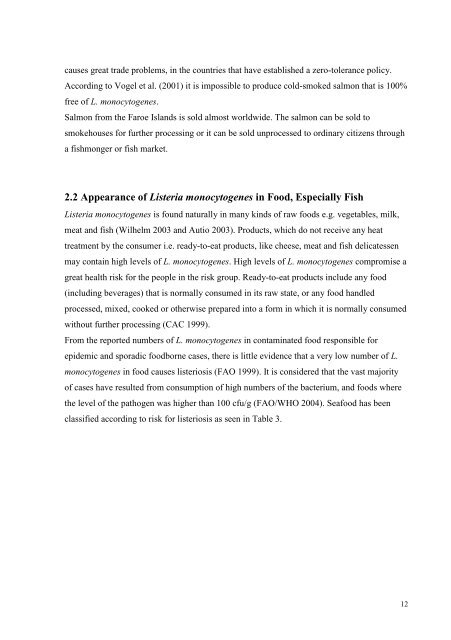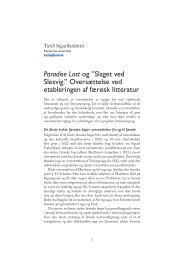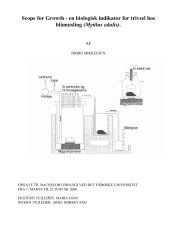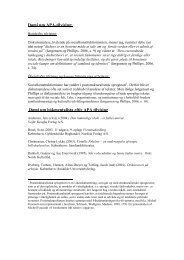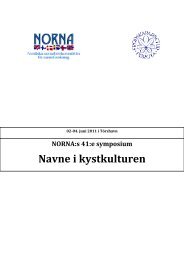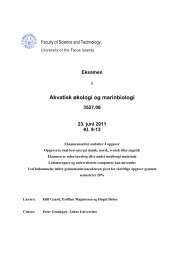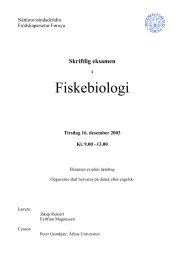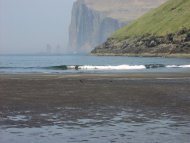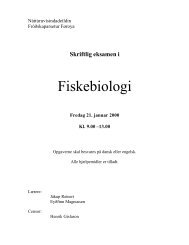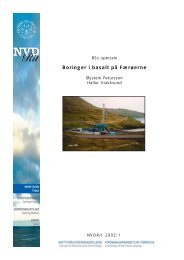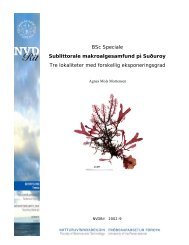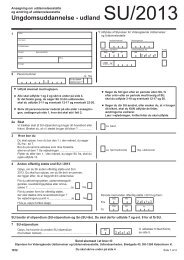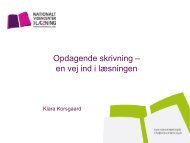Infectious Pancreatic Necrosis Virus (IPNV) - Fróðskaparsetur Føroya
Infectious Pancreatic Necrosis Virus (IPNV) - Fróðskaparsetur Føroya
Infectious Pancreatic Necrosis Virus (IPNV) - Fróðskaparsetur Føroya
You also want an ePaper? Increase the reach of your titles
YUMPU automatically turns print PDFs into web optimized ePapers that Google loves.
causes great trade problems, in the countries that have established a zero-tolerance policy.<br />
According to Vogel et al. (2001) it is impossible to produce cold-smoked salmon that is 100%<br />
free of L. monocytogenes.<br />
Salmon from the Faroe Islands is sold almost worldwide. The salmon can be sold to<br />
smokehouses for further processing or it can be sold unprocessed to ordinary citizens through<br />
a fishmonger or fish market.<br />
2.2 Appearance of Listeria monocytogenes in Food, Especially Fish<br />
Listeria monocytogenes is found naturally in many kinds of raw foods e.g. vegetables, milk,<br />
meat and fish (Wilhelm 2003 and Autio 2003). Products, which do not receive any heat<br />
treatment by the consumer i.e. ready-to-eat products, like cheese, meat and fish delicatessen<br />
may contain high levels of L. monocytogenes. High levels of L. monocytogenes compromise a<br />
great health risk for the people in the risk group. Ready-to-eat products include any food<br />
(including beverages) that is normally consumed in its raw state, or any food handled<br />
processed, mixed, cooked or otherwise prepared into a form in which it is normally consumed<br />
without further processing (CAC 1999).<br />
From the reported numbers of L. monocytogenes in contaminated food responsible for<br />
epidemic and sporadic foodborne cases, there is little evidence that a very low number of L.<br />
monocytogenes in food causes listeriosis (FAO 1999). It is considered that the vast majority<br />
of cases have resulted from consumption of high numbers of the bacterium, and foods where<br />
the level of the pathogen was higher than 100 cfu/g (FAO/WHO 2004). Seafood has been<br />
classified according to risk for listeriosis as seen in Table 3.<br />
12


